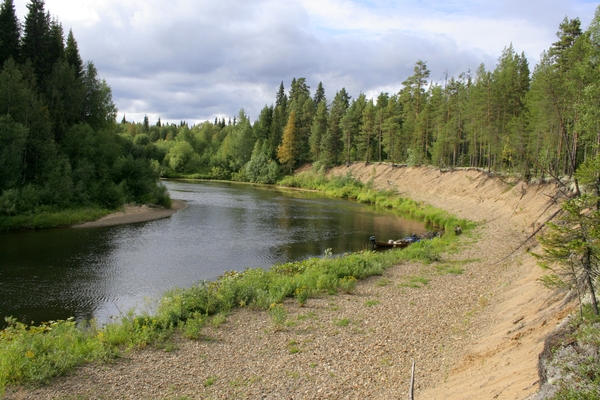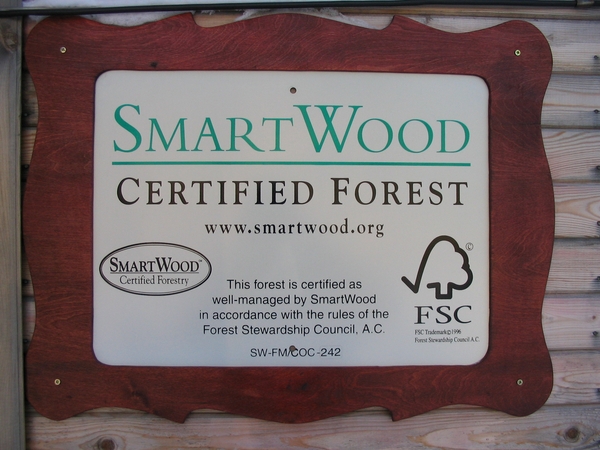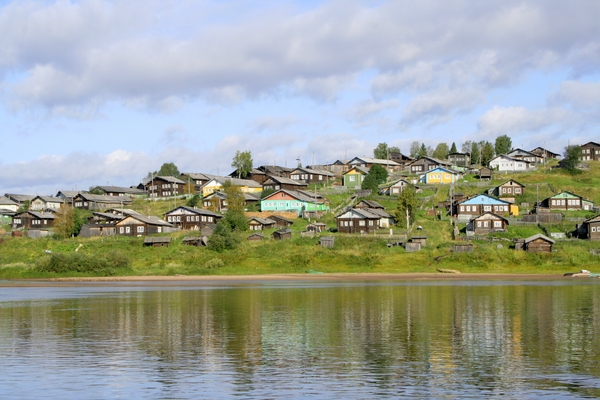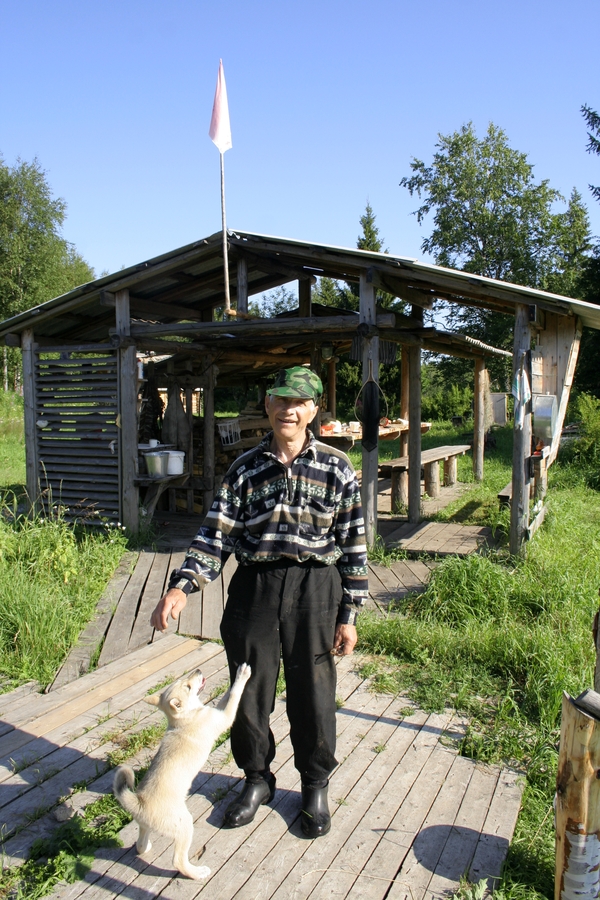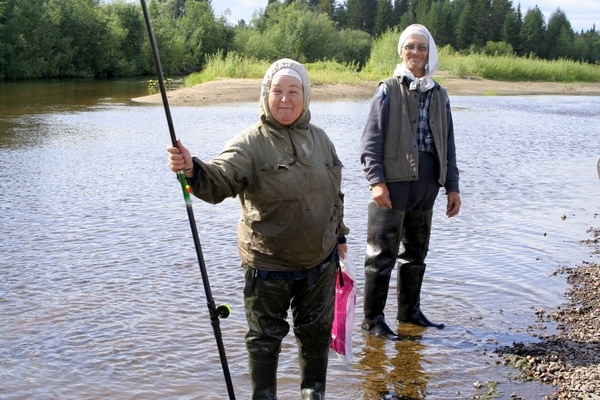О Фонде
Landscape planning in forestry
Traditionally, forestry planning in Russia is performed on the basis of the forest inventory materials which,
- quickly lose their relevance and do not reflect the current condition of the forests,
- do not take into account many important ecological parameters of the forest landscape,
- do not show the relief of the territory based on which an adequate choice of technology, timeframes and intensity of the activities planned to be fulfilled in the forest (for example, during the construction of the forest roads, location of logging road on the cutting area, selection of key biotopes, etc.) depend on. A forest management map (a forest stands plan) is “flat”.
This is a source of many problems for the competent forest planning on the landscape basis.
In the past decade Earth Remote Sensing (ERS) methods have been rapidly developing in the whole world. They are based on the data received from the Earth observation satellites, which enables to get relevant information about the territory and reliably define the most important and sensitive parameters of the landscape in respect of ecology.
Use of satellite images made in different years by various means and having different spatial resolution enables to create layers of cartographic information on which all ecologically important objects have geographical coordinates and reliable reference. Thus, forest inventory materials and forest maps can be supplemented by new ecological information, corrected, and securely bound to the area by means of GIS – geographic information systems. Creation of such maps is in the interest of everybody: forest users themselves, forestry units controlling them, nature conservation agencies, auditors, environmental organizations, and just regular local residents – mushrooms pickers, hunters, fishers. Up-to-date forest maps are very good and pictorial and therefore represent a foolproof communication tool.
Ecologically competent landscape planning requires creation of GIS-layers or maps reflecting the following:
- High conservation value forests with indication of restrictions and recommendations on the forest management.
- Key biotopes, i.e. areas important for conservation of biodiversity.
- Types of natural dynamics of the forests which have to be imitated during the cutting and reforestation for conservation of biodiversity and forest productivity.
- Vulnerability of forest soils, which is needed for the split between winter and summer cutting areas during the cutting planning.
- All permanent and temporary water streams and swamps determining the water regime which should be treated carefully in order to avoid any damage.
- Habitats of rare species which have to be preserved during the forest use.
- High social value forests (areas rich in mushrooms and berries, recreation areas, territories of traditional nature use, cultural and historical objects) recording of which will help to avoid unnecessary conflicts.
Landscape planning project is supported by Mondi Group and OJSC Mondi Syktyvkar as the main leaseholder of the forest fund of Komi, Territorial Informational Fund (TFI RK) – the main keeper of the cartographic information, Forest Committee and Ministry of Industry of the Komi Republic as state forest management agencies.
Conservation of pristine forests and biodiversity
The term biodiversity is defined as “diversity of wildlife at the genetic, species, ecosystem and landscape levels”. Scientists and politicians raised the issue of necessity to preserve biodiversity as the most important condition for survival of the Earth’s biosphere and the mankind itself relatively recently – at the end of the XX century. This was determined by alarmingly rapid and more and more accelerating extinction of plant and animal species, certain ecosystems, and even landscapes caused by human activities.
Every species in the ecosystem is responsible for various connections and processes and its extinction results in the breaking of these connections. Together with extinction of species “strength” or stability of the ecosystem to the external influence gradually and steadily goes down. It becomes similar to an old moth-eaten blanket which can be torn into separate pieces during the next “shaking” and these pieces can never be put together again. Currently scientists can only guess how complicated and multi-faceted these connections are, but extinction of ecosystems and entire landscapes has already become reality (the Aral Sea).
Species diversity of taiga forests is estimated as 25 000 species while according to some scientists today we know only about 30% of species of living organisms inhabiting these ecosystems. We don’t even know by sight 70% of species of invertebrate, weed, fungus, lichen, insect, and other groups of plants and animals not to mention their role in the forest ecosystems. Meanwhile, transformation of taiga forest by people is going on so fast that, for example, in Scandinavia 8000 species listed in the “Red book” are already threatened with extinction. In the Komi Republic the “Red book” includes about 1000 “forest” species because the period of “intensive forest use” here is shorter by 150 years.
Specifically in Komi – at the north-east edge of Europe – large massifs of natural forests which have never been cut and changed due to human activities, and now commonly referred to as PRISTINE or LOW-DISTURBED forest, have been preserved. They have a global ecological value. It is no mere chance that the first object in Russia granted the World Natural Heritage Status by UNESCO called “Komi Pristine forests” became undisturbed forest massifs of Pechora-Ilych Reserve and Yugyd-Va National park with the total area of 3 mln. ha. They preserve unique biodiversity of Priuralye taiga in the contact zone of European and Siberian flora and fauna.
But pristine forests in Komi have been preserved not only at the foothills of Ural. They make up about 30% of the forested area of the republic. The largest massifs are located on its borders with the neighbor regions – Arkhangelsk, Kirov, and Perm regions. These massifs remained “undeveloped” due to the fact that they are situated on the border of economic affordability. There are neither roads nor industrial plants there and residents of few adjacent villages live a traditional lifestyle. Today these pristine forests are the last “warehouses” of ripe wood in the European north of Russia. Their major part remains in the category of “commercial forest” and therefore it can be harvested according to the Russian legislation. But once the pristine forest is cut down it can never be restored!
Every landscape is unique in its own way same as history, language, and culture of every nation. Pristine forest covering this landscape like a blanket is its integral part. After thousands of years of joint evolution they adapted to each other so much that now can successfully stand up to any natural disaster, for example, global climate change. Therefore, by means of pristine forests conservation we preserve biodiversity of the taiga biota from genes to landscapes, we preserve the possibility of understanding the laws of sustainability of these nature systems for our ancestors, we preserve the potential for restoration of the “disturbed biodiversity” on the developed areas.
Voluntary forest certification
Paper, furniture, boards, matches are the products necessary for a man. They are all made of wood, which means that some forest has to be cut to enable people to use them. What does the forest mean in the life of a man? Much. Forest is the lungs of the planet producing oxygen and absorbing carbon dioxide. Forest regulates the climate, protects soils against erosion, and maintains the level of groundwater. We go to the forest to collect mushrooms and berries, to hunt or simply to have a rest.
But how often do we give thought to the ways by which this wood was produced? Have the logger taken into account ecological functions of the forest? Hasn’t he violated the interests of the workers? Hasn’t he infringed on the rights of the local residents? By no means can every logger answer these questions in the affirmative. Moreover, up to 20% of the forest in Russia is cut down illegally!
One way to distinguish a responsible logger is to check if his goods are certified.
Voluntary forest certification is a procedure by which a third party (auditor) independent from the producer and consumer gives written assurance that forest management and use, as well as the products produced from wood harvested in this forest, conform with certain requirements. Currently a certification system under the Forest Stewardship Council (FSC) scheme is the most popular in Russia.
Forest Stewardship Council is an international organization which created a system for verifying of ecologically and socially responsible forest management. FSC label on wood or goods made of it ensures that these products are made of wood that has been harvested in the forest with ecologically and socially responsible forest management. FSC certificate is issued by an independent FSC accredited auditor based on the results of the rigorous annual audit carried out on the harvesting area.
Silver Taiga Foundation is an initiator of the voluntary forest certification process in Komi. In 2003 Priluzje forestry unit (Komi Model Forest) became the first certified forestry unit in Russia. On the initiative of the Foundation and with the assistance of the Forest Committee and Government of the Komi Republic a Working group on development of the Komi Regional FSC-standard project was established.
At the beginning of 2012 the area of certified forest in Russia amounts to 28,2 mln. ha (19% of the leased forest area). The largest logging enterprises in Russia and the Komi Republic are certified. Certified paper, board, sawn timber, plywood are supplied to the international and internal markets.
Auditors checking the logging enterprises in Komi apply to Silver Taiga Foundation, as an organization competent in FSC-certification issues and interested in development of sustainable forest management, to get consultations. Besides the Foundation is a legally registered consultant rendering assistance to enterprises in preparation for certification.
Indigenous and local population support
Cooperation with local residents and support of indigenous and local population is becoming an important field of activity within the framework of every project implemented by the Silver Taiga Foundation and focused on sustainable nature use and development.
It’s easy to explain why this very area of activities has been chosen. The thing is that the quality of life of the local residents including the indigenous population is a decisive criterion for evaluation of the development. Sustainable development is impossible without regard to the long-term interests of the local community.
Under condition of sustainable resources management local community, local residents take part in the management process and selection of the direction for development of this territory. Implementation of this principle requires knowledge about possible mechanisms for such participation, their adjustment to the local conditions and peculiarities of the Russian legislation, and provision of support to the local residents in learning of these mechanisms.
During the implementation of the “Sustainable management of northern forests: “Komi Model forest”” project mechanisms for participation of the population in the forest management have been defined and adjusted jointly with the local population and other participants of the forestry affairs. Currently these mechanisms are used not only in the Model forest but also in other regions of Komi (public hearings, public forest council, recommendations on preservation of the mushrooms and berries areas popular among the population, etc.). A lot of local initiatives aimed at development have also got the support. Similar activities focused on search and adaptation of the mechanisms for participation of the local residents in the resources management but this time related to the river resources have been started within the framework of the “Model River Mezen” project.
Unfortunately during the last two decades local and indigenous population of the Komi Republic especially residents of the rural regions, as well as other forest territories of the north of Russia remained “on the sideline” of development. One of the reasons is lack of the full assessment of the current economical situation and resource potential of the forest settlements. There is no vision of possibilities and ways for improvement of their position in the current market conditions. During the ”Forest village” project such estimation was carried out and the proposals were provided for several pilot settlements. A mechanism for preservation (protection) of the traditional nature use territories has been developed and is already used in the forest regions of the republic. A number of initiatives focused on development of new types of economic activities for our villages have been supported.
The main resource and potential for development of the forest territories is people, local residents, and local community. We see the development of the local communities as a movement from the state of affected object to the state of actor. It’s very important not to focus purely on the local problems but to have a chance for their joint discussion, joint search for the ways forward, and exchange of experience. Republican Forest dialogues organized by the Foundation have become an effective mechanism and a platform for such collaboration. An educational development program “Village ecology” developed within the framework of the Silver Taiga projects for the rural schools and aimed at development of cooperation within the local communities is currently under implementation in many villages of the Republic.
Restoration of fish resources
Fish resources of the River Mezen are decreasing over last 50 years with dangerous acceleration during last 20 years. It is especially dramatic with Atlantic Salmon, abundant previously and almost rare now.
Continuous over-fishing, illegal in most cases, is seen as direct cause number one, indirect impact of industrial logging of forest in the river basin as cause number two.
Government agencies are concentrated on controlling and fining functions with little consideration for awareness and needs of local population living in poverty. All river stakeholders, including poachers, are concern about negative trend in fish resources, but ways to solve the problem are not clear. It is mainly due to lack of cooperation among interested organizations and consequently lack of strategic and short term plans for fish resource management.
The Mezen River (857 km long, flowing from the Komi Republic, by Arkhangelsk Oblast to the White Sea) has been selected to develop and to demonstrate new approaches. Model River Mezen Project is intending to change the situation and to start positive trend in restoration of fish resources including migratory salmon. It is planned to establish cooperation among river stakeholders and to develop together efficient measures of fish restoration. The project has started from problem analysis, from regular meeting with river stakeholders, from development of project plan for 2011-2013, from field overview expeditions and monitoring of fish resources with special attention to Salmon.
Starting funding has been provided by Mondi Group for the period of 2011-2013.
Silver Taiga is initiator and coordinator of the project in close cooperation of Komirybvod (State Fish Agency), local NGOs, other representatives of local population and with Komirybnadzor (State Fish Controlling Agency). For full list of partners see detailed information.




